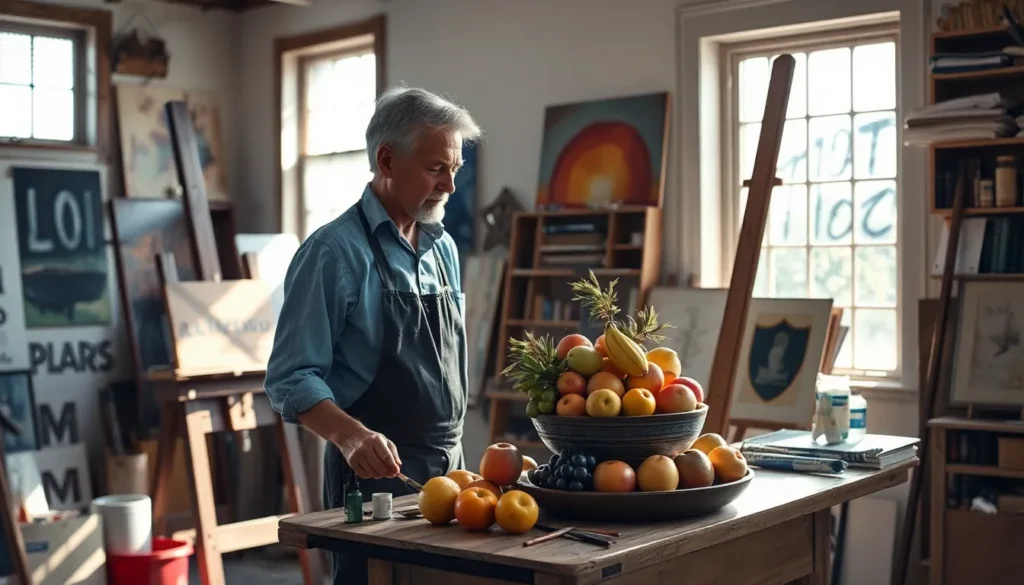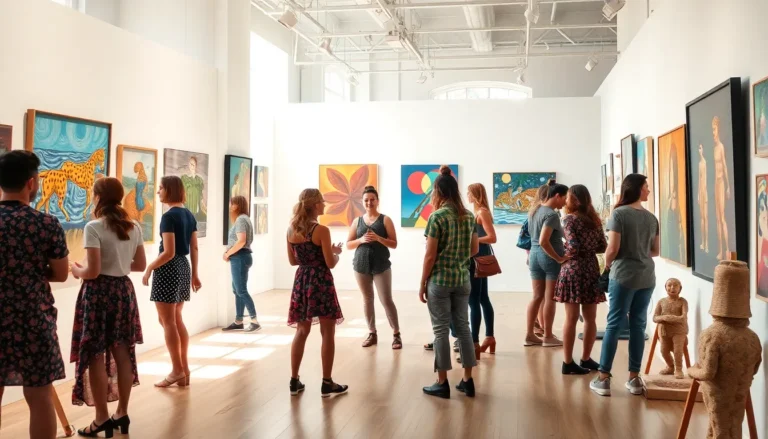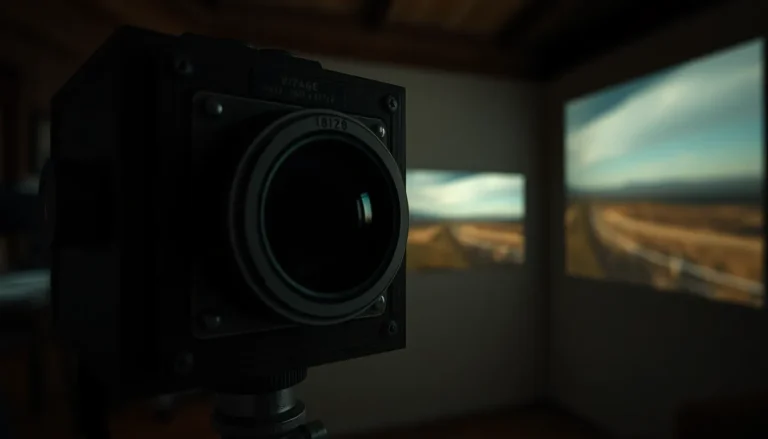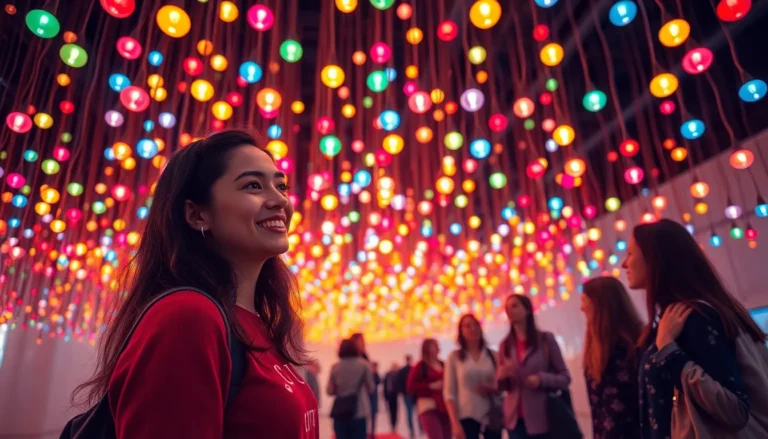Table of Contents
ToggleRealistic painting is like the magic trick of the art world—one moment, you’re staring at a canvas, and the next, you’re convinced you just walked into a window. It’s the art form that blurs the lines between reality and imagination, capturing life with such finesse that even the most discerning critics might need a second glance.
Imagine a world where a simple still life can evoke emotions or where a portrait seems to breathe. That’s the power of realistic painting. With every brushstroke, artists create not just images, but experiences that challenge perceptions. Dive into the captivating realm of realistic painting, where every detail matters, and discover how this timeless technique continues to inspire and amaze.
Overview Of Realistic Painting
Realistic painting captures the intricacies of life through observable details. This art form creates images that mirror reality, prompting deep emotional responses from viewers.
Definition And Characteristics
Realistic painting features an accurate representation of subjects including people, objects, and landscapes. Artists employ techniques such as shading, perspective, and composition to achieve lifelike effects. Precision in detail remains crucial. Textures and colors closely match what one sees in everyday life. Artists often focus on natural light to enhance realism, utilizing shadows and highlights. Styles within this genre vary, but the goal stays consistent: to forge a connection between the painting and the audience.
History And Evolution
Realistic painting has roots in ancient civilizations, including Greek and Roman eras, where artists aimed for fidelity to nature. The Renaissance marked a significant progression as artists like Leonardo da Vinci and Michelangelo emphasized observation and human emotion. Over centuries, movements like Barbizon and American Realism further advanced the genre. In the 19th century, photography impacted realistic art, challenging artists to explore new techniques. Contemporary artists continue to push boundaries while honoring foundational principles, keeping the tradition of realism alive and evolving.
Techniques Used In Realistic Painting
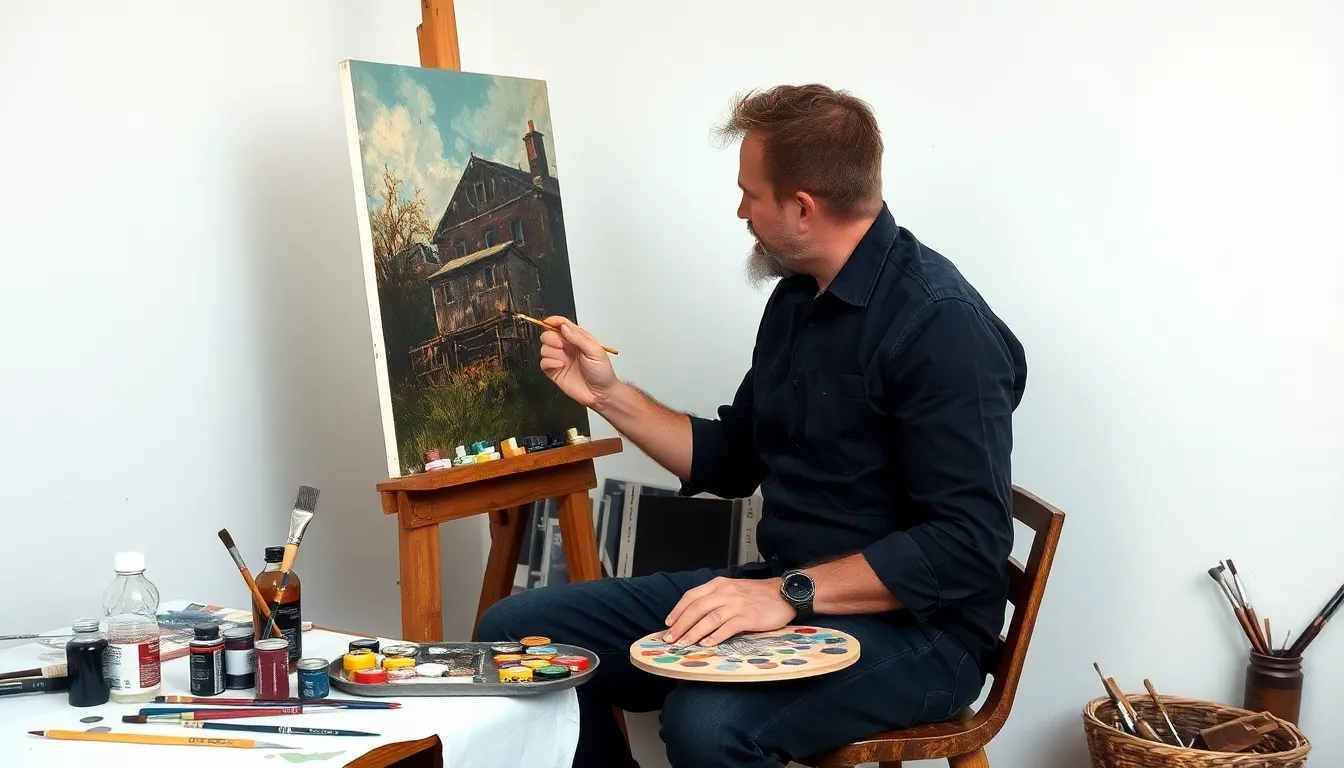
Realistic painting employs various techniques that enhance lifelike representation. Artists combine skill and material knowledge to create compelling works.
Common Materials And Tools
Oil paints serve as the primary medium for many realistic painters. These pigments offer rich colors and smooth blending capabilities. Acrylic paints also gain popularity due to their quick drying time and versatility. Brushes come in numerous shapes, allowing for fine detail or broader strokes, depending on the artist’s vision. Canvas or wood panels provide suitable surfaces for these materials. Palette knives are utilized for texture creation, adding depth to the artwork. Additionally, reference photos often assist in achieving accurate details and proportions.
Step-By-Step Process
Painters typically begin with a detailed sketch, focusing on composition and proportions. Next, they apply an underpainting, establishing basic forms and values. Building layers of color follows, starting with darker shades and progressing to lighter hues. Artists often use glazing techniques to create depth and luminosity in their work. Blending occurs continuously to achieve smooth transitions between colors. They pay close attention to highlights and shadows to enhance realism. Finally, a varnish layer protects the finished painting, ensuring longevity and vibrancy.
Famous Realistic Painters
Realistic painting boasts numerous artists who have shaped the genre. Their contributions continue to influence contemporary practices and inspire new generations.
Notable Works And Contributions
Johannes Vermeer is celebrated for his intricate use of light, evident in works like “Girl with a Pearl Earring.” Gustave Courbet challenged conventions with pieces like “The Stone Breakers,” which highlighted everyday laborers. Chuck Close, known for his massive portraits, employs a grid technique that captures minute details in works such as “Big Self-Portrait.” Other significant figures include Diego Velázquez, whose “Las Meninas” captures the complexity of royal life, and Andrew Wyeth, recognized for his vivid landscapes and still lifes in “Christina’s World.” Together, these artists pushed the boundaries of realism, creating impactful and memorable artworks.
Impact On The Art World
Realistic painters significantly reshaped perceptions of art throughout history. They emphasized observational accuracy, encouraging viewers to appreciate the beauty in everyday life. The movement cultivated a greater understanding of technique and craftsmanship, influencing future art movements such as Impressionism. Artists demonstrating realism paved the way for photography, enabling new techniques for capturing reality. Their legacy is apparent in the emphasis on detail and lifelike representations that remain prevalent in contemporary art. Realism continues to resonate, fostering discussions on the nature of representation and authenticity.
Analyzing Realistic Painting
Analyzing realistic painting involves exploring its interpretive layers and aesthetic principles. This art form communicates complex ideas and emotions through meticulous detail and lifelike representation.
Interpretation And Meaning
Meaning in realistic painting lies in the artist’s selection of subjects and portrayal of everyday life. Each painting conveys a specific narrative and emotion, inviting personal responses from viewers. Perspectives often shift based on the observer’s experiences and cultural backgrounds. Artists frequently layer symbolism within their work, encouraging deeper analysis of seemingly simple scenes. For example, a still life may reflect themes of mortality or abundance, depending on its composition and context. Overall, the exploration of meaning fosters an intimate relationship between the artwork and its audience.
The Role Of Aesthetics
Aesthetics play a crucial role in shaping the viewer’s experience in realistic painting. Visual harmony enhances appreciation and evokes feelings of beauty and connection. Attention to composition, color schemes, and light affects how viewers perceive and interpret the artwork. Artists emphasize detail through techniques such as chiaroscuro and perspective, which create depth and realism. Highlighting everyday subjects allows for a celebration of the ordinary, transforming mundane objects into captivating visuals. Effective aesthetics make realistic paintings more engaging, encouraging continuous exploration of their intricacies.
Realistic painting remains a powerful medium that transcends time and artistic boundaries. Its ability to capture the essence of life through meticulous detail continues to resonate with audiences today. As artists explore new techniques and perspectives, they breathe fresh life into this age-old tradition.
The emotional depth and visual accuracy found in realistic art invite viewers to engage deeply with their surroundings. By bridging the gap between reality and imagination, realistic painting not only reflects the world but also enhances our understanding of it. This enduring art form will undoubtedly continue to inspire and challenge perceptions for generations to come.

